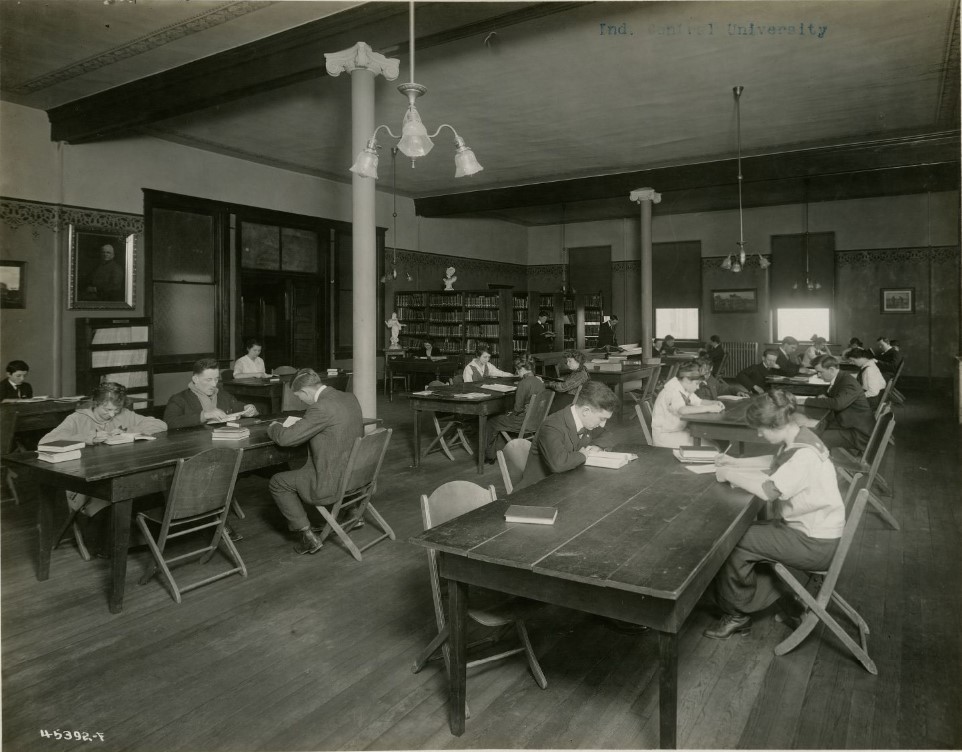Approximately 3,700 degree-seeking students pursue 65 major fields of study in day and evening programs at the University of Indianapolis, which the Church of the United Brethren in Christ founded and the State of Indiana chartered in 1902. As a result of denominational mergers, the university was an Evangelical United Brethren institution from 1946 to 1968 and is now affiliated with the United Methodist Church. Chartered as Indiana Central University, the institution was popularly known as Indiana Central College from 1921 to 1975 when usage reverted to the original name. In 1986 the name was changed to University of Indianapolis.

When the university opened its doors to students in 1905, it had an eight-acre campus and one building. By 1926 it had added 50 acres and built four dormitories and a gymnasium. Since 1956 12 buildings and a stadium have been erected, and the original neoclassical building has been remodeled extensively. A fine arts center, completed in spring, 1994, is the first phase of a new master plan to enhance facilities and beautify the campus.
The University of Indianapolis has had six presidents, three of whom served for a total of 72 years. Irby J. Good, business manager, was elected president in 1915 because the board of trustees found no one else willing to take the responsibility; he accepted the position for the same reason. When Good assumed the presidency, receivership seemed imminent, but he was able to fend off creditors, fund the debt, enlarge the campus, erect five buildings, and restore confidence in the institution’s viability. For several years he functioned as president, business manager, and dean; on at least one occasion he also served as a general contractor for the construction of a dormitory. He was a frugal manager, and despite the , the indebtedness was liquidated about six months after he retired in 1944.
Shortly after the arrival of , president from 1945 to 1970, the university attained regional accreditation and balanced its budget for the first time. Under Esch’s leadership the institution, heretofore primarily committed to and dependent upon the sponsoring church, broadened its mission. To serve the community more effectively, the university added business and health science programs to the traditional curriculum of liberal arts and teacher education and began scheduling classes in the evenings, on weekends, and off campus to make them more accessible to non-traditional students. When the Evening Division was created in 1958, it was the only place in Indianapolis where one could earn a baccalaureate degree through evening courses alone. After masters degrees became mandatory for most Indiana teachers, an evening graduate program was instituted in 1966. The Center for Continuing Education and Management Development and the Community Music Center also were established during Esch’s tenure, and eight buildings were erected to accommodate expanding programs and rising enrollment.

While Gene E. Sease was president from 1970 to 1988, identification with the community was furthered by changing the name to University of Indianapolis and establishing the Office of Community Services. The Executive MBA program, founded in 1978, and the graduate physical therapy and graduate occupational therapy programs, begun in 1980 and 1983 respectively, were the first such programs in Indiana. Restructuring in 1983 organized the university into the College of Arts and Sciences; School of Business; School of Education; School of Nursing; and five graduate programs, one of which is the Krannert Graduate School of Physical Therapy.
Notable additions to the physical plant during Sease’s tenure were the Ruth Lilly Center for Health and Fitness and the Krannert Memorial Library. The library’s collection includes papers and memorabilia of Senator , Mayor , and Republican party stalwart .
The university is committed to providing education with an international dimension. Each year students and faculty take advantage of opportunities to study, travel, or work abroad. In a typical year, the university enrolls more than 100 students from about 40 countries. It offers an associate degree program in Cyprus, has an articulation agreement with International College in Athens, Greece, and is affiliated with Tunghai University in Taichung, Taiwan. Travel grants, endowed by the late Leon G. Zerfas to foster cross-cultural understanding, are awarded to about a dozen faculty members each year.
In athletics, the university is a member of NCAA Division II and competes in the Great Lakes Valley Conference and the Midwest Intercollegiate Football Conference. It fields teams in 20 intercollegiate sports, as many as any other university in Indiana.
The University of Indianapolis is accredited by the North Central Association of Schools and Colleges. Various programs are accredited by the Department of Education of the State of Indiana, National Council for Accreditation of Teacher Education, National League for Nursing, National Association of Schools of Music, American Physical Therapy Association, American Occupational Therapy Association, and Association of Collegiate Business Schools and Programs.
*Note: This entry is from the original print edition of the Encyclopedia of Indianapolis (1994). We are currently seeking an individual with knowledge of this topic to update this entry.

Help improve this entry
Contribute information, offer corrections, suggest images.
You can also recommend new entries related to this topic.





